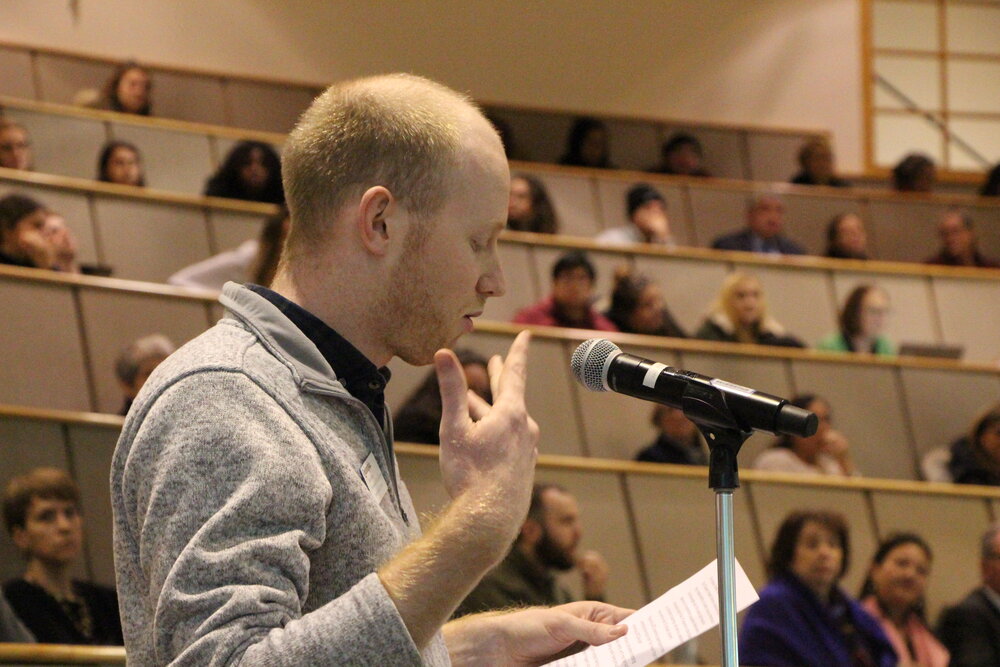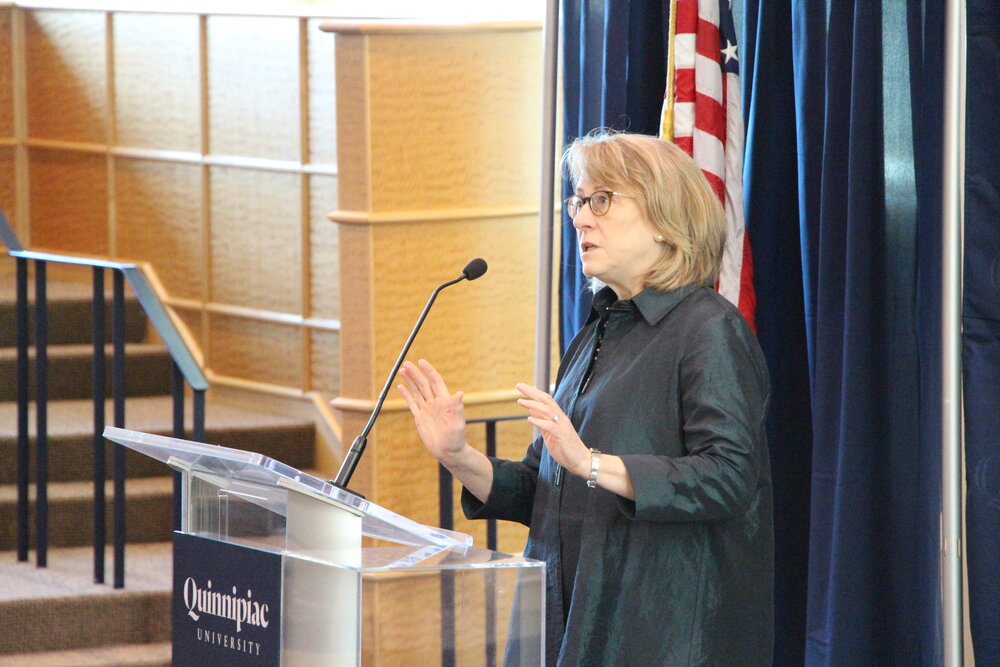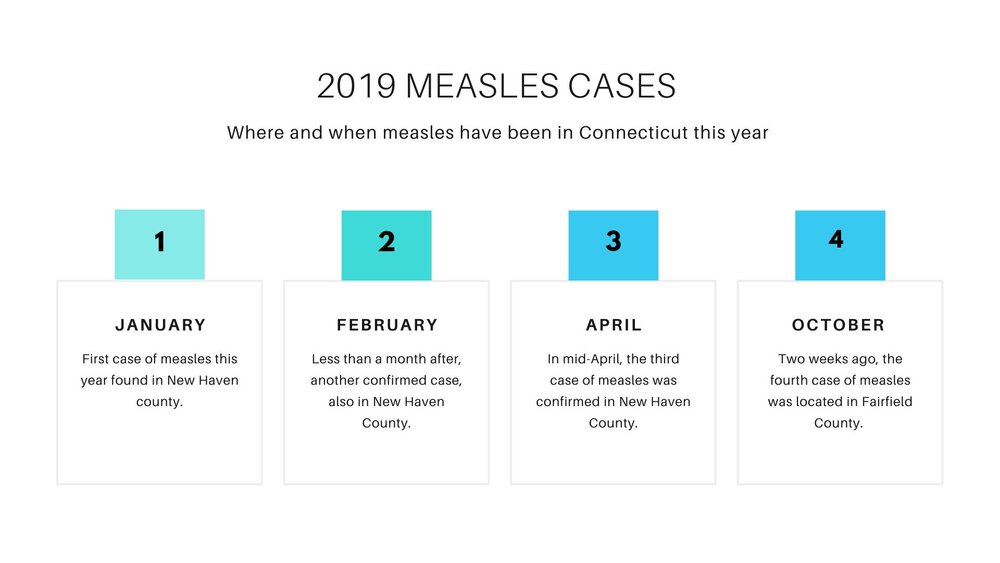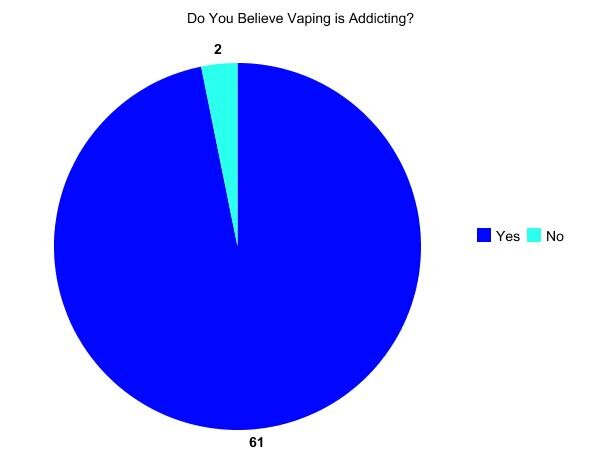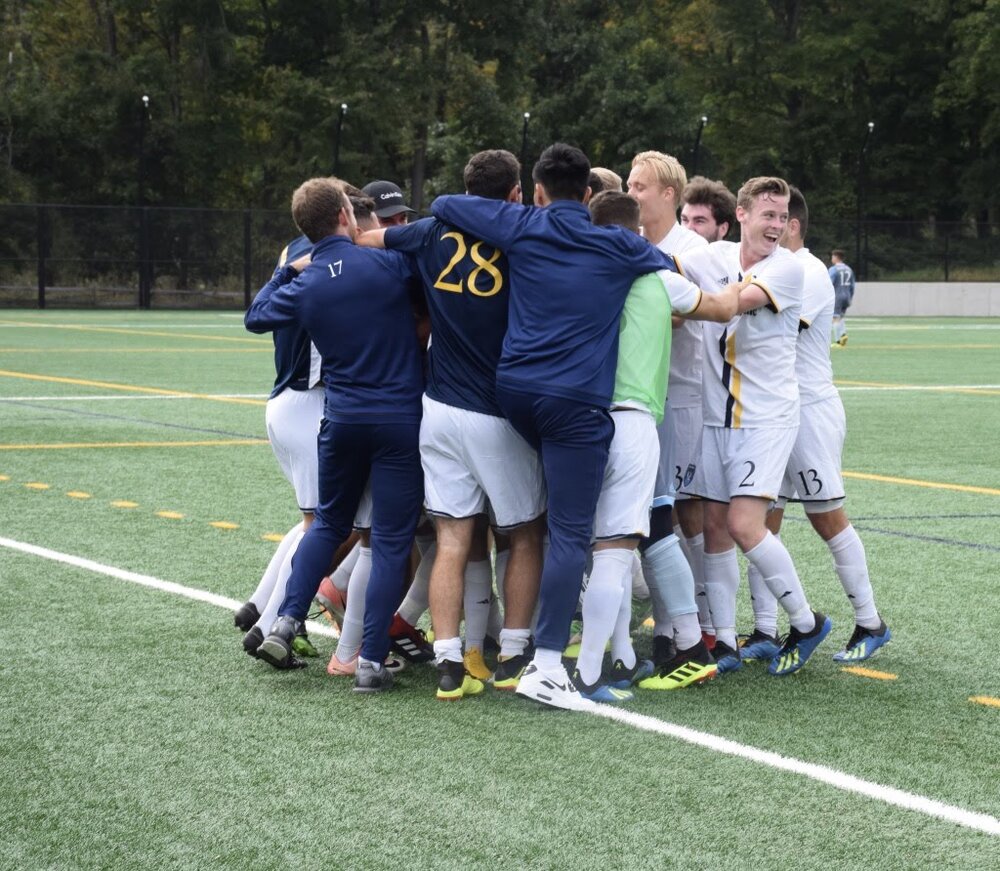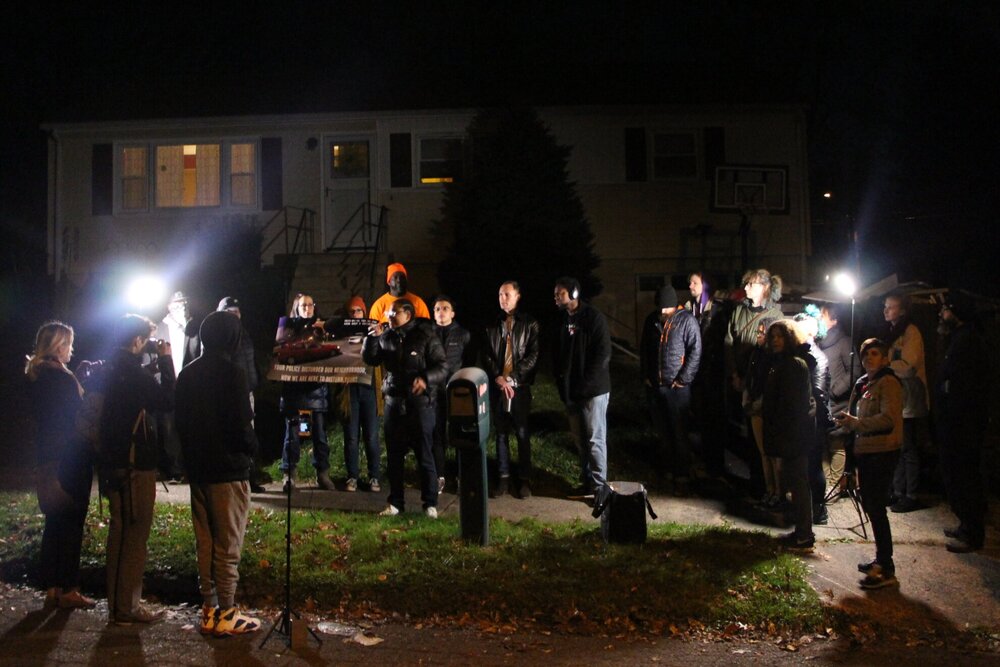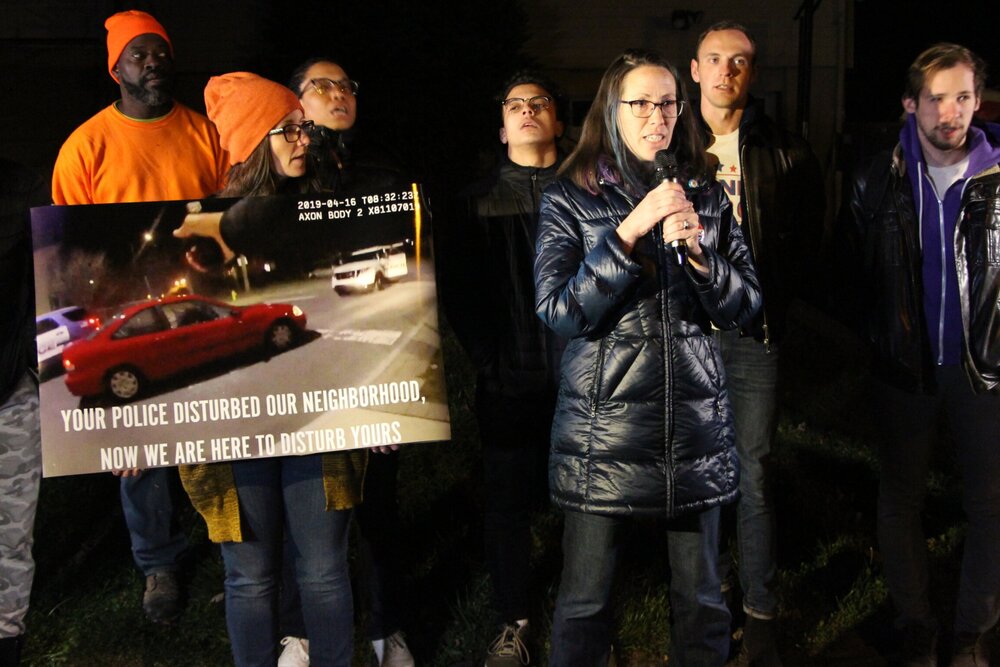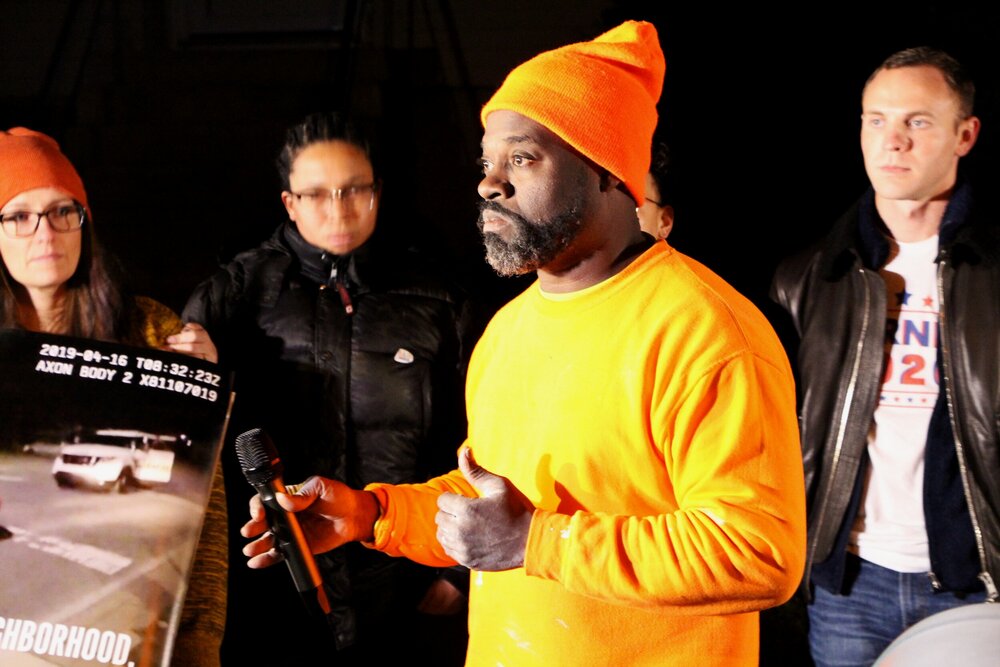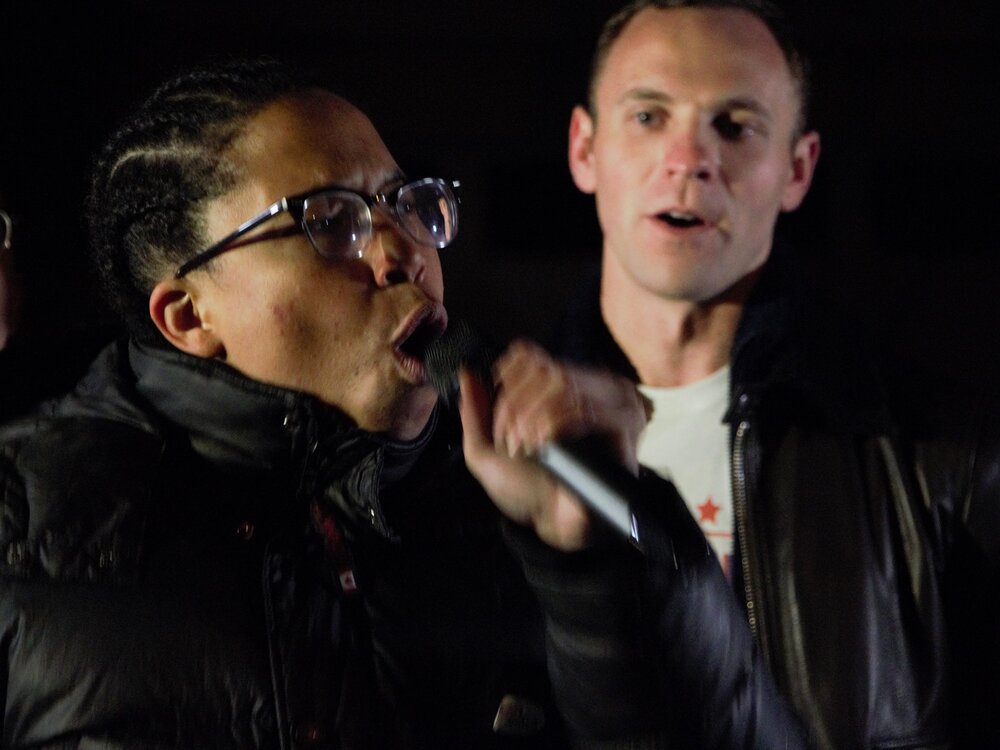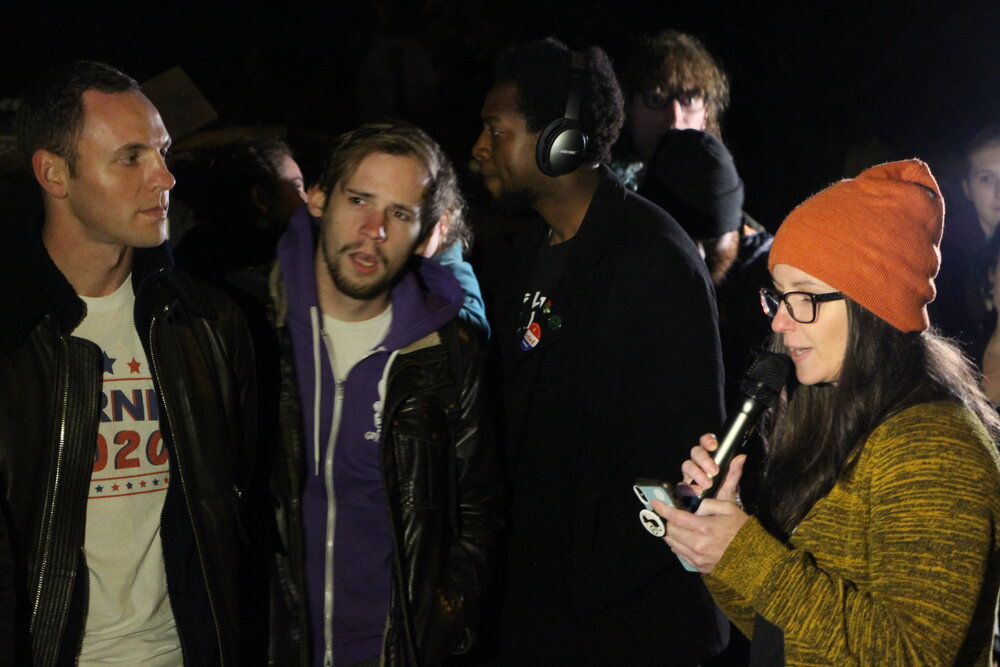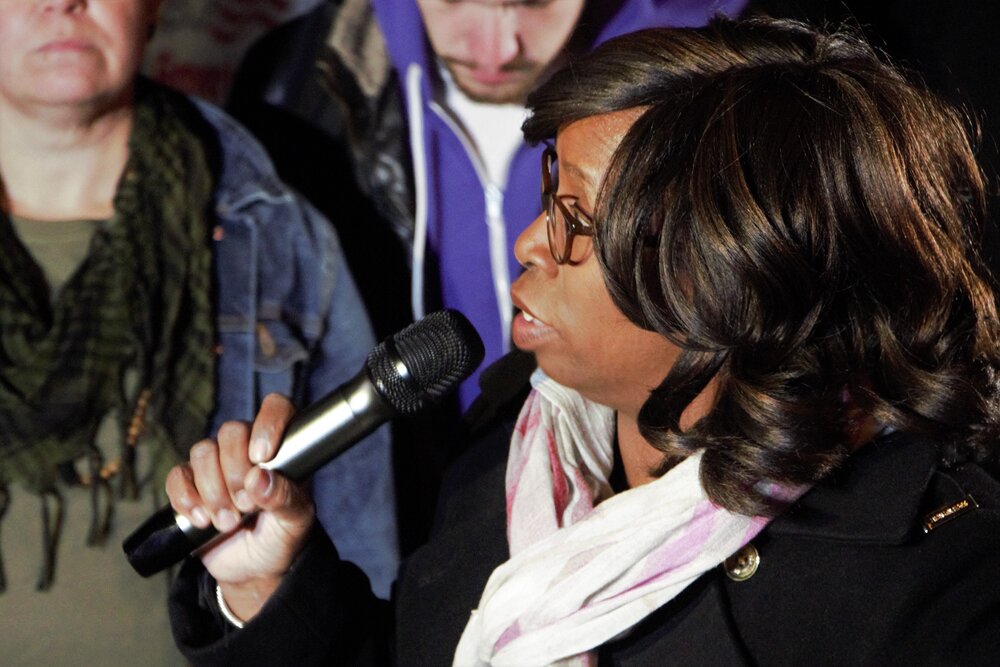
Jay Kaye, who ran as a Republican candidate against Mayor Curt Leng, standing in front of Common Grounds, Hamden. Photo by Bryan Proctor.
Growing up, Jay Kaye mowed lawns, shoveled snow and painted houses. Painting stuck with him, and for the past 23 years he’s been at Ferraro’s Painting & Restoration. He worked himself up from painting in the field to production manager. When he decided he wanted to head in a new direction, he got involved in local politics.
He said his political journey began in 2018 when he marched in the Memorial Day Parade with the Hamden Republican Town Committee.
“At that point I had already gone to a couple Legislative Council meetings and kind of figured out what was going on, and how the whole system was working, and how broken the system was,” Kaye said. “I wasn’t really sure how marching in the parade was going to help that, but I felt moved enough to march in the parade. I’ll represent Republicans because I really have lost trust in the Democrat’s ability to manage the town properly.”
>
“ I wasn’t really sure how marching in the parade was going to help that, but I felt moved enough to march in the parade. I’ll represent Republicans because I really have lost trust in the Democrat’s ability to manage the town properly.”
After being a lifelong Democrat, Kaye lost faith in the Democratic group running Hamden.
The Republican Town Committee was at the front of the parade. Kaye was standing in the middle carrying the committee’s sign. He said seeing the public’s reaction to the Republican group is when he decided the town needed political change.
“Some people were a little more vocal, but there was a respectful clap, where they’d almost look to see who was watching then decided whether they were going to clap or not,” he said. “Which actually cemented the fact that things need to change here because people are afraid to stand up the regime, or whatever you want to call it, the democratic machine, running the town for so long.”
When Kaye started to attend the Republican Town Committee meetings, he said he saw dedication, but low morale. He took this as an opportunity to get involved and run for public office, specifically for Mayor.
“They really needed somebody willing to go out there and represent (them), and instead of Legislative Council, I picked Mayor,” he said. “I thought that would be the best, most effective use of my abilities and would help the town the most.”
He saw running for mayor as an opportunity to communicate a message to voters.
“Listen there’s an opportunity to make a change here,” he said. “We can change the direction (of the town), things are bad, we all know things are bad, but we don’t have to be stuck there, we can make a difference.”
Though he wanted to run for mayor, he wasn’t sure what kind of a toll running would take.
“At first I was afraid it would affect my family and my job, but my family became more and more supportive and my wife even entered one of the races,” he said.
His family backed him, and he said Ferraro’s was also good about giving him the time he needed for his campaign.
Kaye was determined to change the leadership of Hamden. He says he was confident because he saw people believing in his ideas.
>
“I think one of my biggest ideas, and it’s certainly not my own idea, it’s been brought up before, was switching the town from a mayoral council to a town manager system.”
“I think one of my biggest ideas, and it’s certainly not my own idea, it’s been brought up before, was switching the town from a mayoral council to a town manager system,” he said.
A town manager is hired by the Legislative Council and Board of Finance to manage the town’s finances, making the role of the mayor smaller. Kaye said a town manager system makes the mayor a cheerleader and advocate for the town and its people.
He continues, “The benefit of this is that the town manager doesn’t owe anyone any favors, isn’t working for a political agenda, isn’t working for anything other than the taxpayer. Basically, working for the town. It’s designed to get rid of any corruption, get rid of cronyism, get rid of party agendas, get rid of paying back favors, and losing control.”
When it came to election night Kaye says he was feeling confident, but he knew after votes were counted in the sixth district he was going to lose.
“When I saw the results coming in, obviously I was disappointed, but I wasn’t disheartened,” Kaye said. “I went to the headquarters (the Elks Lodge) where we were either going to be celebrating or disappointed. The reaction there was actually quite positive because the numbers were strong and we picked up an extra seat.”
He ended up losing the election to opponent Curt Leng 7,412 to 4,898. While Kaye lost, he did win the 9th district, the only district to go Republican.

The graphic above displays the different voting districts in Hamden. The ninth district was the only district to go Republican. Graphic by Nick Slater.
“I think that was a nice message to the Democratic Town Committee saying ‘Look, it may not have happened this time, but change is definitely coming your way.’” he said.
He might not have gotten the win he was hoping for, but he wants to give the race another shot.
“I’m going to stick with it,” he said. “I’ve already kind of decided that in two years I probably will run again, but right now I just want to focus on what I can do to help the town as a resident.”
In the meantime, Kaye plans to continue spending his time helping Hamden. He said he has a lot of energy left to give to the community.
“I just turned 55,” he said. “I still have some years left in me and I have plenty of energy. I really did want to be the mayor so that I could use that energy to give to the community and really help the town, but I can still do that just as a resident, I don’t necessarily have to be the mayor to do that, and I’m going to continue to do that.”
